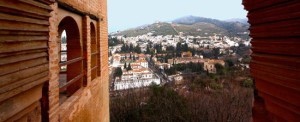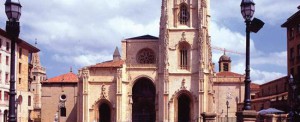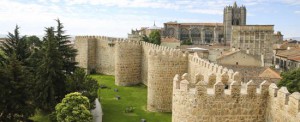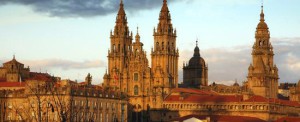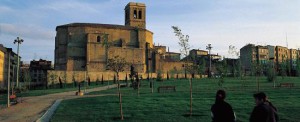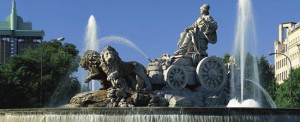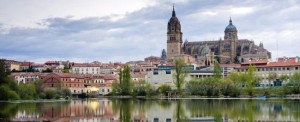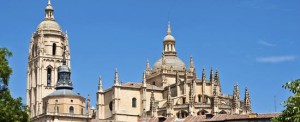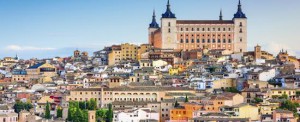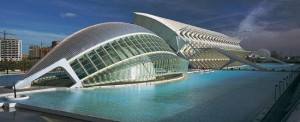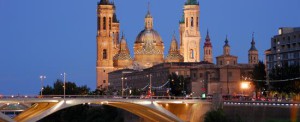Andalusia
Divided into eight provinces: Almería, Cádiz, Córdoba, Granada, Huelva, Jaén, Málaga and Seville. Its capital is the city of Seville. A land of culture, history, fiestas, nature areas and excellent food. An opportunity to visit everything from outstanding monuments to a wide variety of different natural landscapes… and have the chance to take part in several unique popular events and sample a range of delicious gastronomic products. One way to discover the culture of Andalusia is by exploring the sites which have been awarded the UNESCO World Heritage designation. In Granada, you’ll see the Alhambra palace, the Generalife gardens and the mediaeval Albaicín neighbourhood; in Cordoba, its historic centre with the great Mosque; in Seville, the cathedral, the Alcázar palace and the Indies Archive; and in Jaén, the monumental sites of Úbeda and Baeza. And be able to experience festivals such as Easter Week, the Carnival in Cadiz, the Rocío pilgrimage in Huelva and the April Fair in Seville.
Asturias
The Principality of Asturias is located in the North of Spain occupying a territory of 10.603 km2 and is home to 1.085.000 people. It´s bordered on the West by Galicia, on the North by the Cantabrian Sea, on the East by Cantabria and to the South by the province of Leon. The capital is Oviedo, Gijón being the largest city. Other significant towns are Aviles, Langreo, Mieres, Pola de Siero, Cangas de Narcea, Luarca, Ribadesella, Cangas de Onis and Llanes.
Avila
Sheltered by the Sierra Gredos Mountains we find Ávila, a World Heritage City. Behind the city walls of this Castile-Leon capital there is a valuable set of churches and Renaissance palaces that bear witness to the past wealth of the town as a textile centre. Being the birthplace of Saint Teresa of Jesus has left its mark across the city, both inside and outside the city walls, with a large number of religious buildings linked to the saint’s life. The European Commission has given Ávila the Access City Award 2010. The excellent roasts and famous Avila veal cutlet are just part of a rich local cuisine without forgetting the famous dessert of Saint Teresa – «yemas» (sugared egg yolks).
Catalonia
Barcelona, the capital of Catalonia, is a Mediterranean and cosmopolitan city with Roman remains, medieval quarters and the most beautiful examples of 20th century Modernism and avant-garde. It is no surprise that emblematic constructions by the Catalan architects Antoni Gaudí and Lluís Doménech i Montaner have been declared World Heritage Sites by the UNESCO. The city’s origins are Roman, and its long history and economic dynamism have made Barcelona a cultural city, which can be seen in the historic-artistic heritage and the promotion of the most innovative artistic trends. A wide cultural programme will take visitors to museums, exhibitions, open-air sculptures… and many concerts, plays and dances.
Galicia
Discover Santiago de Compostela, the capital of the Region of Galicia. Millions of people from all over the world come to this city every year, many of them reaching the end of the Way of Saint James pilgrimage route. Its historic centre has been designated a World Heritage Site by the UNESCO.
La Rioja
Logroño is a city rich in history and traditions which have been preserved since the Middle Ages. The Pilgrim’s Route to Santiago de Compostela made this one of the most important towns on the route, leaving an interesting monumental legacy closely linked to the traditional passing of the pilgrims.
Madrid
Madrid, the capital of Spain, is a cosmopolitan city that combines the most modern infrastructures and the status as an economic, financial, administrative and service centre, with a large cultural and artistic heritage, a legacy of centuries of exciting history.
Salamanca
Salamanca is in the central area of Spain, 212 kilometres from the capital, Madrid. Universal, magnificent, wise, young and golden: this city is an inland destination well worth discovering for many reasons. Its historic center has been designated a World Heritage Site by the UNESCO.
Segovia
Segovia, the old quarter of which, along with its Roman aqueduct, are World Heritage Sites, lies on high ground between the Eresma and Clamores Rivers. In addition to its famous aqueduct, numerous Romanesque churches, the Cathedral and Fortress go to form this magnificent landscape that presides over this part of Castile. Its modern Parador Hotel is one of the best places for the visitor to savour the city’s most traditional dish: roast suckling pig. Moreover, Segovia is an excellent starting point to tour the province and visit to the La Granja Palace, as well as the Gorges of the Duratón River Nature Reserve, among other attractions.
Toledo
Toledo is one of the Spanish cities with the greatest wealth of monuments. Known as the “city of the three cultures”, because Christians, Arabs and Jews lived together there for centuries, behind its walls Toledo preserves an artistic and cultural legacy in the form of churches, palaces, fortresses, mosques and synagogues. This great diversity of artistic styles makes the old quarter of the capital of Castile – La Mancha a real open-air museum, which has led to it being declared a World Heritage Site.
Valencia
There are few cities like Valencia, able to harmoniously combine the remnants of its farthest past, dating to the year 138 BC, with the most innovative and avant-garde buildings from the new millennium. Valencia is trade and culture, cinema, theatre, museums, magic, business. It is the center of international and avant-garde design, and one of the most active cities in Europe regarding fairs and conferences. Thanks to its location, Valencia has historically been Spain’s Mediterranean port and has that special charm of cities that are also seaports. And the fine sand and clean water, the vastness of the sea and the closeness of the coastal mountains make the Valencian coast uniquely attractive.
Zaragoza
Zaragoza, one of Spain’s major cities. The capital of the Region of Aragon is located on the banks of the Ebro River, halfway between Madrid and Barcelona. With 2,000 years of history. You will find a stunning legacy of monuments in the streets of the city, vestiges of the Roman, Moorish, Jewish and Christian communities who left their mark on the place: Roman ruins such as the Circus; Aljafería Palace; Mudejar-style churches, with the UNESCO World Heritage designation; Baroque gems like the Pilar Basilica; the work of brilliant artist Francisco de Goya… And also the Expo 2008 site.

